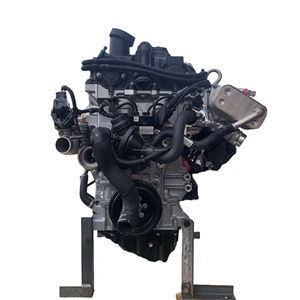Opel Corsa Engine: Common Issues and Just How to Repair Them
Opel Corsa Engine: Common Issues and Just How to Repair Them
Blog Article
Comprehensive Testimonial of a Subcompact Automobile's Powertrain Capabilities
In the world of vehicle engineering, the powertrain of a subcompact cars and truck stands as an essential nexus where performance, effectiveness, and development converge. From the engine's relentless search of optimal performance to the transmission's seamless choreography of power distribution, every aspect plays a critical role in defining the total driving experience.
Engine Performance Analysis
In examining the engine performance of the subcompact vehicle, a comprehensive evaluation reveals its effectiveness and power result under numerous driving conditions. The subcompact car's engine, a crucial component of its powertrain system, demonstrates extensive efficiency metrics. The engine's efficiency is noteworthy, as it optimizes fuel consumption without compromising power delivery. Under normal driving conditions, the engine operates smoothly, showcasing an equilibrium in between performance and gas economic climate.
Moreover, when subjected to rigorous screening circumstances such as high-speed acceleration or uphill climbs up, the engine shows resilience and responsiveness. Its power outcome stays regular, supplying ample velocity when needed. The subcompact cars and truck's engine is tailored to satisfy the demands of city driving, where fast acceleration and nimble maneuverability are important.
Furthermore, the engine's layout incorporates contemporary technologies that enhance its efficiency qualities. Functions like turbocharging or variable shutoff timing contribute to improved power delivery and torque, enhancing the overall driving experience. To conclude, the engine efficiency of the subcompact cars and truck emphasizes its ability to deliver reputable and effective power outcome across different driving conditions.
Transmission Performance Examination
Evaluating the subcompact automobile's transmission efficiency entails assessing its efficiency in sending power effortlessly throughout different driving problems. The efficiency of a transmission system is crucial as it directly influences the overall efficiency and gas economic situation of the car. In reviewing transmission performance, elements such as equipment proportions, change timing, and the level of smoothness of equipment changes are taken into consideration. A well-designed transmission system should efficiently supply power from the engine to the wheels while reducing energy losses.
One usual technique used to evaluate transmission performance is with dynamometer testing, where the power output from the engine is measured at the input and result shafts of the transmission. Disparities in between input and result power can suggest the degree of efficiency of the transmission system. Furthermore, real-world driving tests are conducted to evaluate just how the transmission performs in useful situations. By analyzing these elements, designers can recognize areas for improvement and optimize the transmission system for better general performance and efficiency.
Fuel Effectiveness Exam
The examination of the subcompact automobile's gas efficiency entails an extensive evaluation of its usage rates under numerous driving conditions. Gas performance is a critical consider evaluating the total efficiency and cost-effectiveness of a lorry. By gauging the amount of fuel taken in each distance took a trip, commonly shared as miles per gallon (MPG) or liters per 100 kilometers (L/100 kilometres), click for source the efficiency of the subcompact automobile's powertrain can be identified.

Additionally, developments in modern technology, such as hybrid systems, regenerative braking, and automated start-stop systems, have substantially enhanced gas efficiency in modern-day subcompact vehicles. Suppliers remain to introduce and maximize powertrain elements to improve fuel performance while fulfilling efficiency demands and environmental regulations. Assessing a subcompact car's gas efficiency gives valuable insights for consumers looking for sustainable and economical transportation options.
Velocity and Handling Assessment
An integral facet of assessing the performance abilities of a subcompact automobile hinges on examining its velocity and taking care of qualities. Velocity is crucial as it identifies just how swiftly the lorry can get to wanted rates, impacting general driving experience and ability to move in various web traffic problems. opel corsa engine. Subcompact cars are commonly preferred for their nimbleness and agility, making velocity from dead stop and during overtaking maneuvers essential elements to consider
When it pertains to dealing with, a subcompact vehicle's capacity to browse corners, maintain security at high speeds, and give a responsive guiding feel are vital. Tight city roads and winding roadways require exact managing to make sure driver confidence and security. Variables such as suspension adjusting, weight distribution, and tire grasp play significant functions in determining a subcompact vehicle's general handling expertise.

Powertrain Components Summary
Upon delving right into the intricacies of a subcompact auto's efficiency, a detailed evaluation of its powertrain components is essential to comprehend the lorry's mechanical bases. The powertrain of a subcompact automobile typically is composed of the engine, transmission, driveshaft, differential, and axles. Recognizing exactly how these components function with each other is critical in assessing a subcompact vehicle's general performance, performance, and driving dynamics.
Final Thought
To conclude, the subcompact auto's powertrain capacities have been thoroughly assessed in regards to engine efficiency, transmission performance, gas handling, velocity, and efficiency. The thorough evaluation highlights the importance of each part functioning with each other flawlessly to provide ideal performance. In general, the powertrain elements of the subcompact automobile have been found to be efficient and well-balanced, making it a dependable option for chauffeurs seeking a small and fuel-efficient lorry.
In the world of automobile design, the powertrain of a subcompact automobile stands as a crucial nexus where effectiveness, efficiency, and advancement merge.In assessing the engine performance of the subcompact vehicle, a comprehensive evaluation reveals its efficiency and power outcome under different driving conditions.Evaluating the subcompact automobile's transmission performance includes analyzing its performance in sending power effortlessly across various driving problems. Comprehending exactly how these elements function with each other is vital in examining a subcompact vehicle's total performance, efficiency, and driving characteristics.In final thought, the subcompact automobile's powertrain capacities have actually been completely analyzed in terms of engine performance, transmission effectiveness, fuel effectiveness, handling, and acceleration.
Report this page